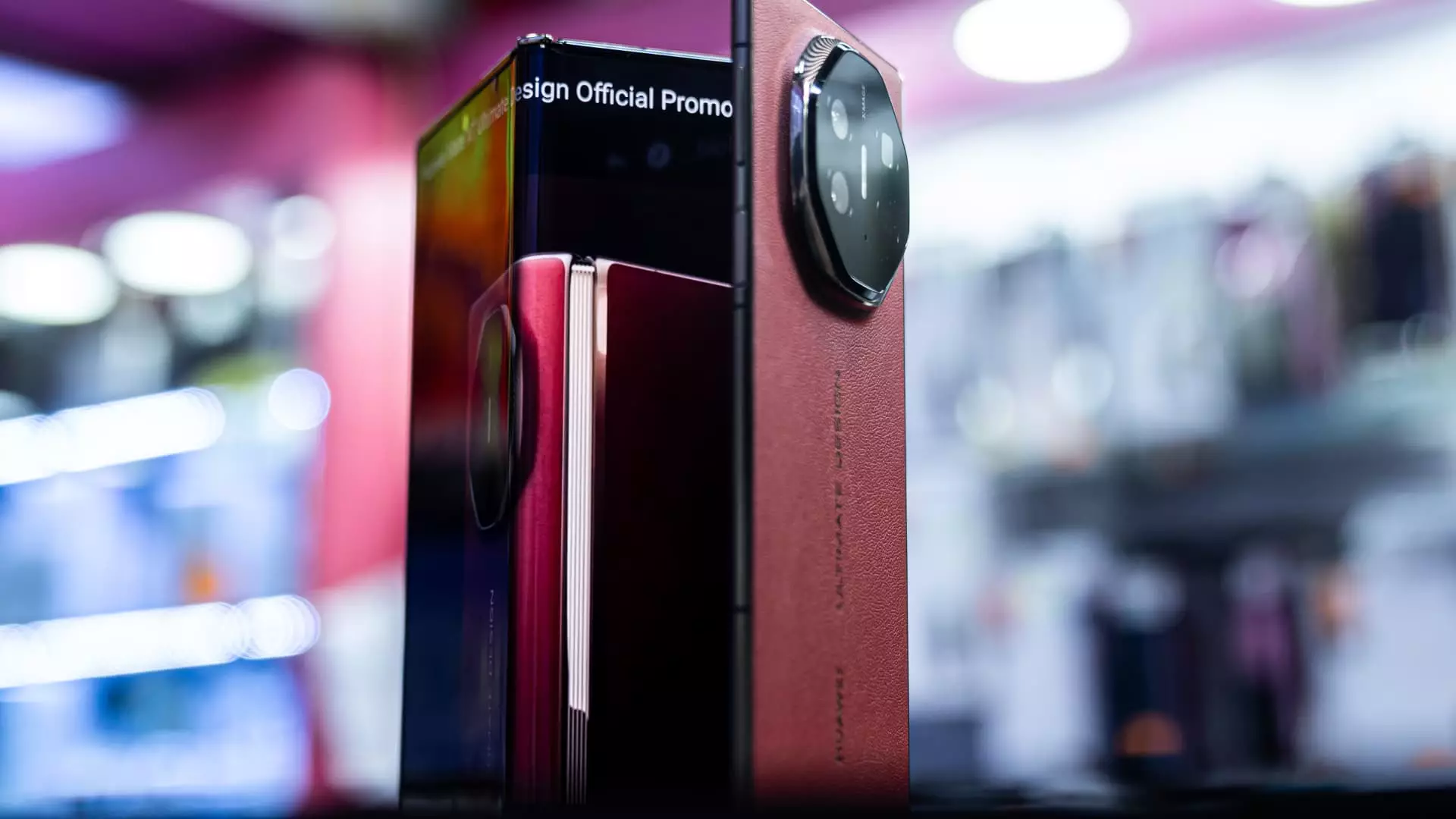Huawei is making headlines once again as it introduces its much-anticipated trifold smartphone, the Mate XT, to markets beyond China. Amidst the ongoing fallout from U.S. sanctions, which have severely impacted its ability to compete internationally, Huawei is attempting to reclaim its footing in the smartphone arena. With a formidable starting price of 3,499 euros (approximately $3,660), the Mate XT takes center stage as a premium offering in an increasingly competitive landscape.
The Mate XT stands out not just for its pricing but also for its cutting-edge design. Unlike traditional foldable smartphones that hinge once, the Mate XT features a trifold design, boasting two distinct folding points. This allows users to display content on one, two, or even three screens, which is a first in the smartphone sector. This innovation has sparked international curiosity since its initial release in China last year, positioning the Mate XT as a novel device for those seeking unique technology.
The significance of this launch transcends mere specifications; it reflects Huawei’s broader ambitions to reestablish itself as a leader in smartphone technology. The company’s previous dominance in the industry was challenged significantly by a series of U.S. sanctions imposed in 2019. These sanctions restricted Huawei’s access to advanced semiconductor technology and deprived it of critical software support, including Google’s Android operating system. Following this loss, Huawei’s market share plummeted, particularly outside of its home turf, where it now captures a meager 0.3% of the global market according to recent IDC data.
Huawei’s strategy with the Mate XT appears directed toward a specific segment of consumers—namely, affluent individuals willing to invest in high-end, luxurious technology. Francisco Jeronimo, a data and analytics vice president at IDC, suggests that the Mate XT may not appeal to the masses but instead to a niche market keen on displaying wealth through their tech choices. “The device serves as a unique value proposition for those who wish to showcase their financial prowess rather than prioritize the user experience,” Jeronimo stated.
This targeted strategy also implies that Huawei is aware of the significant challenges it faces in competing with technology giants like Apple and Samsung. The Mate XT will be put to the test in international markets where brand loyalty and operating system familiarity play crucial roles. The absence of Google’s ecosystem, including the Google Play Store and other popular apps, creates a substantial hurdle that could deter many potential customers in regions outside China.
Despite the obstacles ahead, Huawei aims to leverage improvements made in its domestic market, where its share has surged from 12% to 17% in just a year. This resurgence was notably attributed to the introduction of advanced chips in their devices, suggesting that the company is capable of innovation, even under stringent sanctions. If Huawei can maintain this momentum, the Mate XT could usher in a new chapter of growth and reignite its international presence.
However, even optimistic projections indicate that the Mate XT’s potential success may be limited. Industry analysts estimate that selling half a million units could yield approximately $1.5 billion in revenue, a figure that, while substantial, pales in comparison to the volume sold by competitors. The challenge will be not simply to attract buyers who can afford the Mate XT but also to convince them that a trifold smartphone, lacking the advantages of Google’s robust app ecosystem, is a worthy investment.
Huawei’s re-entry to international markets with the Mate XT is emblematic of its determination to innovate in difficult circumstances. While the smartphone landscape poses numerous challenges—ranging from competitive pressures to logistical limitations—Huawei’s journey signals a crucial test of its resilience and ability to adapt. It will be interesting to see if the allure of its unique design can captivate consumers or if the lack of popular application support will stifle its ambitions in the premium segment. As always, time will tell how effectively Huawei navigates this complex global landscape.

